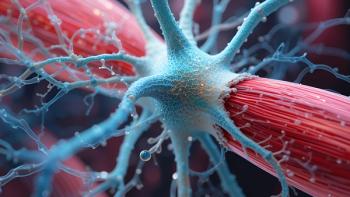
- BioPharm International-04-02-2010
- Volume 2010 Supplement
- Issue 4
Process Harmonization Assessments for Technology Transfer
A process harmonization assessment can aid in smooth technology transfer by comparing data across equipment and sites.
Abstract
A process harmonization assessment (PHA) is an efficient tool to thoroughly assess the differences between separate sets of equipment processing a specific molecule. The main components reviewed in a PHA include: process flow, process parameters, equipment capability, and raw materials. A PHA document evaluates the risk to the technical success of a technology transfer by understanding the important process and equipment-related issues early in the process. A PHA document also discusses when differences between sets of equipment may affect critical design parameters for the process such as mixing, heat transfer, column flow rates, and gradient control. Early process development and scale-up may not need every aspect of a PHA document, but node-to-node transfers generally realize great benefit when complete assessments are performed.
Technology transfer consists of the transfer of technical information about a process from the laboratory to pilot-scale, pilot- to commercial-scale, and commercial node-to-node transfers. Each transfer has varying levels of data and restrictions. A node-to-node transfer has the largest breadth of process data, but also has the highest restrictions caused by critical process parameters and other process and equipment parameters defined by a registered process. When contemplating a technology transfer, a well thought out process to assess the inherent differences between facilities and equipment sets must be followed.
One of the most efficient ways to do this is by conducting a process harmonization assessment (PHA). The PHA compares process and engineering parameters from the current process facility and equipment set to a proposed facility and equipment set. The main components of a PHA include the review and comparison of process flow, process parameters, equipment capability, cleaning, and raw materials. Each of these components also includes a discussion of differences in parameters between the facilities. Action items may be created to understand the impact of the differences. These action items may include mixing studies or additional laboratory data to support the changes to the process that are required as a result of the transfer.
Technology transfers early in the development cycle have fewer strictly designed process steps and few if any critical process parameters (CPPs). A simple assessment of the most basic process flows, process parameters, yields, and purities may be enough for a PHA at this development stage. After process development reaches pilot-scale or production-scale, further details in the assessment are critical to reduce risk from unknown variables and ensure both the receiving site and sending site understand the process and the equipment that is being transferred. A PHA document may undergo revisions over the course of a technology transfer as the design progresses, and will continue to be revised as the process changes.
Process Flow Review
The process flow review section of a PHA establishes how the receiving site will fit the process into its major pieces of equipment. This is the earliest portion of the PHA that can be completed. In many cases, a process flow review is completed during due diligence or the initial process fit. Each piece of equipment is selected to enable the major process steps to flow with approximate equipment capacity, product flow through the facility, and process timing. This section may take the form of a process equipment diagram with the process flow shown in a basic process and instrumentation diagram. The process equipment flow creates the inventory of equipment needs at the receiving site and will be the basis of any initial capital project needed to procure major equipment, if necessary.
Process Parameters Review
The inclusion of process parameters in the PHA serves primarily as a communication tool to ensure that the receiving site knows the important parameters to control and monitor. This list includes not only any CPPs, if defined, but also any other parameters that are likely to affect product quality, yield, or consistency, such as pH, temperature, conductivity, product concentration, and intermediate step purity and yield. The receiving site will be able to assess whether its equipment set is capable of achieving the required process control. This also is an opportunity for the receiving site to ask questions about process parameters it has observed to be important in other processing experiences. Table 1 shows an example of a process parameter table for an ion-exchange process step. Bold text is used to denote CPPs or other quality parameters that must be maintained.
Table 1 shows that there are differences between the sending site's process parameters and the receiving site's parameters. As with all sections of the PHA, it is important to have a summary to discuss areas of concern that may need more development.
The process parameters also include important scale-up parameters. These parameters may not be directly controllable parameters, but may be significant in attempting to reach comparability. Table 2 shows a list of some of the process parameters that are critical for scale changes.
Equipment Capability
The equipment capability section of the PHA compares the mechanical and instrumentation capability of the pieces of equipment used for the execution of each process step. Equipment capability is a critical assessment, whether the scale of the process changes or not. When transferring a process, there will be many differences between the equipment used to execute the same process step at two different locations. It is important to determine where the differences are in critical design features. Critical design features may affect the ability of the equipment to control or achieve the important process parameters listed in the previous section. Differences in process scale, and what scaling factors were used in the design, should also be included. Table 3 shows an example of an equipment parameter table comparing a piece of equipment used for the same process step at two different manufacturing sites.
Two of the most critical equipment capabilities are buffer capacity and process mixing. When calculating comparable scales between the sending site and the receiving site, buffer and process volume comparisons must be performed. The amount of additional buffer needed is dependent on process transfer line size, flush volumes, and lower height equivalent to a theoretical plate (HETP) values for larger chromatography columns. Larger columns may need more buffer column volumes to equilibrate because of natural inefficiencies with larger columns. Directly scaling buffer volumes from the sending site must be done carefully to account for the differences in the receiving site's tank capacities. In many cases, buffer makeup and storage capacity may be the limiting constraint on process scale-up. Companies can easily purchase larger portable columns, but installing capacity in buffer hold areas can be extremely expensive and result in long lead times. If a process involves any critical reactions or rapid pH changes, it is critical to assess the mixing characteristic between the sending and the receiving site. It is much easier to obtain well mixed environments at smaller scales. Blend time calculation is an easy way to perform an initial comparison, but other comparisons may be required for crystallizations, viscous fluids, or other complex scenarios. In one instance, what was thought to be slow mixing at a pilot-scale was actually faster than what could be obtained at production-scale. Many software packages are available for these analyses.
Raw Materials
Transferring a process to a new facility typically will require a different set of preferred vendors for raw materials. If the raw materials have been registered, the sourcing of new raw materials must meet the registered specifications of the original supplier. If the raw materials are not registered, a side-by-side assessment should be done to ensure comparable quality. If comparable raw materials are not available, Design of Experiments with the new raw materials should be performed to assess the impact on the process. Depending on the number of raw materials, this section may be incorporated into a separate document to facilitate review and approval.
Conclusion
A process harmonization assessment (PHA) is a useful tool to compare various equipment sets proposed to manufacture a single product. PHA compares the process flow, primary process parameters, equipment sets, and raw materials between the two sites involved in technology transfer. Any technology transfer can benefit from the methodology of PHA. Node-to-node transfers benefit the most from the high level of detail contained in a PHA document. Technology transfers in early development can benefit from the documentation of the important parameters and initiate the development of these documents for future transfers. Technical resources at both the sending site and receiving site are involved to enhance the communication and technical expertise of both sites.
Andrew W. Rockabrand is an associate senior consultant engineer in Indianapolis API Engineering Servces at Eli Lilly and Co., Indianapolis, IN, 317.433.0545, rockabrand@lilly.com
Articles in this issue
over 15 years ago
Effective Auditing of CMOsover 15 years ago
Strategies for Optimizing the CMO-Client RelationshipNewsletter
Stay at the forefront of biopharmaceutical innovation—subscribe to BioPharm International for expert insights on drug development, manufacturing, compliance, and more.





